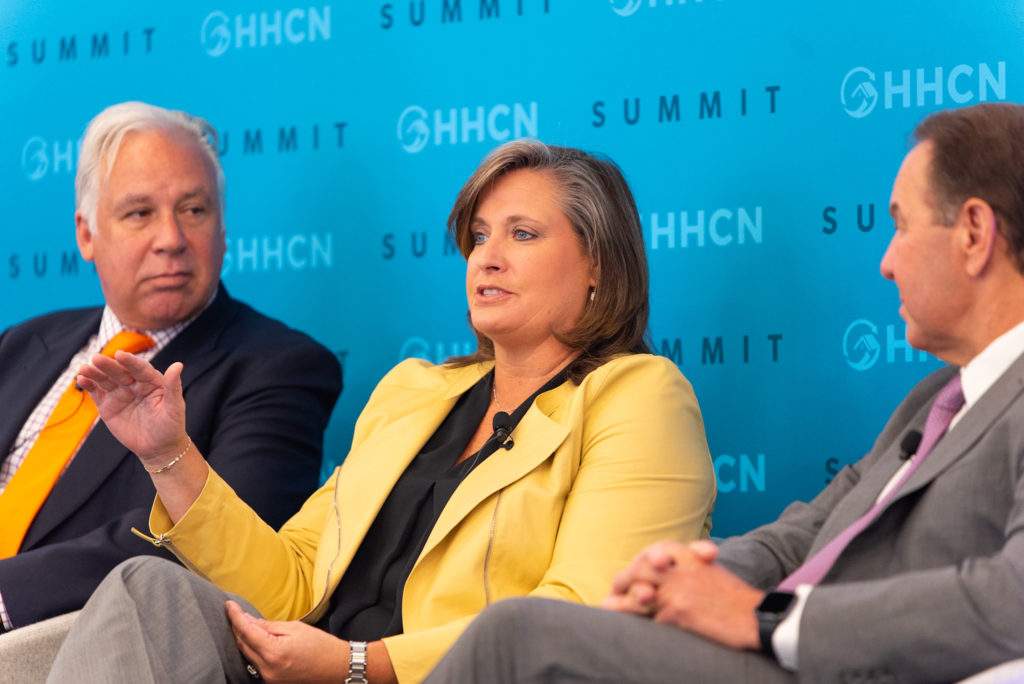For home health providers and their policy advocates on Capitol Hill, the Patient-Driven Groupings Model (PDGM) is priority No. 1, 2 and 3. Lurking in the background, though, is possibly an even bigger, more drastic reimbursement overhaul — a unified payment system for the entire post-acute care landscape.
Currently, post-acute care (PAC) providers include skilled nursing facilities (SNFs), in-patient rehabilitation facilities (IRFs), long-term care hospitals (LTCHs) and home health and hospice agencies. Unlike the separate, setting-specific Medicare reimbursement mechanisms that exist today, a unified model would theoretically pay all PAC providers under one overarching framework.
The concept of a unified PAC payment system isn’t exactly new. In fact, the Medicare Payment Advisory Commission (MedPAC) has been exploring the idea for years, following a Congressional mandate.
“One of the parameters and mandates in the IMPACT Act, which was passed in 2014, was for both the Centers for Medicare & Medicaid Services (CMS) and MedPAC to reveal what a prototype would look like — a fully operational, new prospective payment system (PPS) — by 2023,” Lisa Grabert, a research professor at Marquette and Georgetown universities, said last week during the 2019 Home Health Care News Summit in Chicago. “Certainly within the next five years, we should have a very good idea of what that will look like.”
But a unified model may come knocking on home health providers’ doors sooner rather than later.
The BETTER Act — introduced in the U.S. House of Representative in June — calls for MedPAC to submit a “prototype value-based payment program under a unified prospective payment system for post-acute care services” by March 15, 2021.
“If you don’t try to watch how a unified PAC PPS happens, it will soon be … at your door, showing up, knocking, waiting to get in,” said Grabert, a House Ways and Means Committee veteran who served as lead author of PDGM.
April Anthony, CEO of Encompass Health Corporation’s (NYSE: EHC) home health and hospice division, agreed.
“We have a real future threat coming in the unified post-acute payment [mechanism],” Anthony said, also speaking at the HHCN Summit. “I think that could really turn into the next PDGM — and I think it could happen sooner than PDGM even settles out.”
Shattering silos
In simple terms, MedPAC believes the separate Medicare payment mechanisms create “silos” and inefficiencies in the provision of post-acute care.
Aggregate fee-for-service Medicare spending on PAC settings has remained stable since 2012, in part because of expanded enrollment in managed care. Total PAC spending reached roughly $58.9 billion in 2017, with home health care accounting for about $18 million.
In the past, MedPAC has recommended that a unified PAC system be structured around “stays” rather than “episodes.” In such a model, SNFs appear likeliest to gain the most, with IRFs likeliest to lose the most, according to MedPAC.
For home health providers, a unified model designed by MedPAC could mean a projected payment cut of about 5%. But as home health providers continue to demonstrate their ability to slash U.S. health care spending and improve health outcomes of the Medicare beneficiaries they serve, a unified model could also turn out to be positive.
“Theoretically, we have the opportunity to come out as a huge winner in a unified post-acute payment model, but as we’ve seen with PDGM, there’s at least a risk that [policymakers] don’t get that right,” Anthony told summit attendees. “As quick as we get through this initial PDGM storm, we need to soon thereafter turn our attention to how we influence the unified post-acute bundle.”
In general, home health providers that have strong partnerships with hospitals, physician groups and health plans would have a leg up under a unified PAC framework. The same holds true for providers with integrated operations that span the entire continuum of care.
Technology-savvy providers will also have an edge, according to Joanne Cunningham, executive director of the Partnership for Quality Home Healthcare (PQHH), a Washington, D.C.-based advocacy organization.
“Technology is going to be key — understanding your data and organization,” Cunningham said at the HHCN Summit. “The partnership is putting a lot of effort right now in a big data project that’s looking at the clinical outcomes of patients in different settings with the same diagnosis.”
Different directions
To some, it may seem strange that a unified PAC payment system is even a possibility with PDGM — the biggest payment change to home health care in two decades — taking shape. But that’s largely because of different priorities between different parts of the government.
PDGM has been a point of focus for CMS, which falls under the executive branch of government. Meanwhile, unified payment has been a special project for MedPAC, which reports to Congress.
“You see two branches of government going in fairly different directions,” Grabert said. “As some point, there’s going to be a reckoning of that process.”
Companies featured in this article:
Encompass Health, Georgetown University, Marquette University, Partnership for Quality Home Healthcare




